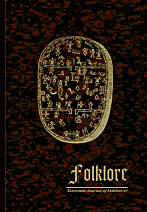The Ritual Year of the Icon of the Annunciation on the Island of Tinos (Greece)
The Ritual Year of the Icon of the Annunciation on the Island of Tinos (Greece)
Author(s): Evy Johanne HålandSubject(s): Customs / Folklore
Published by: Eesti Kirjandusmuuseum
Keywords: death-cult; earth; fertility-cult; festivals; Greece; healing; icon; Mediterranean; official and popular religion; saint; water
Summary/Abstract: After several mystical visions of the nun, Pelagia, the holy icon of the Annunciation of the Blessed Virgin (Panagia) was found in 1823. According to tradition, Pelagia repeatedly witnessed the Panagia in her visions where she received orders from her to find the Virgin’s icon and also to build her church. The icon was unearthed in the field where it had remained since the church, built on the ruins of a pagan temple, was destroyed in the 10th century. Two years before the icon was found, the Greek War of Independence broke out. The finding of the icon, the construction of the Church of the Panagia, Euangelistria, the enormous crowds of pilgrims and all the miracles worked by the icon, contributed to the outcome that the island was declared a sacred island, and Pelagia became sanctified. The ritual year of the miraculous icon on Tinos starts on 30 January with the festival dedicated to the Finding of the Icon. The next festival is dedicated to the Day of the Annunciation of the Virgin Mary. This day has both a religious and a national ideological significance, since 25 March is celebrated as Independence Day. July 23 is dedicated to the “Vision” of Saint Pelagia. The most important festival, the Dormition of the Panagia, is celebrated on 15 August. During the festivals official processions, carrying the icon in its midst, are important, but also popular customs related to the importance of fetching holy water and earth as well as the other symbols which have a long tradition within Greek religions. Accordingly, the article aims to present the ritual year of the miraculous icon on Tinos, thus exploring the relation between official and popular religion. Since several of the rituals and symbols recur across many religious groupings in the Middle East and Mediterranean, they might be studied from a comparative perspective, thus transcending European heritages: liberating the ethnological imagination.
Journal: Folklore: Electronic Journal of Folklore
- Issue Year: 2011
- Issue No: 47
- Page Range: 91-112
- Page Count: 22
- Language: English

